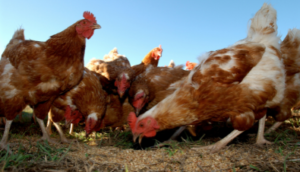Read the latest information on
Foot-and-mouth disease
The importance of vaccinations cannot be overstated generally when it comes to animal health, and this is particularly the case for Newcastle disease (ND) in poultry.
All commercial poultry flocks require vaccination in Australia, except broilers in Western Australia, Southern Australia, Queensland and Tasmania. Details of the vaccination program and requirements can be found in the National ND Management Plan, which outlines the vaccination and surveillance programs that mitigate the risk of an ND outbreak in Australia.
While Australia is free from virulent ND (i.e., obvious disease-causing strains), it is endemic in areas of Mexico, Central and South America, the Middle East and Africa, and widely spread in Asia.
Australia has also seen outbreaks in the past and the virulent form is particularly devastating, so the management plan aims to prevent an emergency disease outbreak occurring.
So, what is Newcastle disease?

ND is a viral disease of poultry and wild birds, characterised by gastrointestinal, respiratory, and nervous clinical signs.
Transmission occurs through direct contact with secretions from infected birds, materials and equipment, feed, water, and hatching chicks through infection by the egg.
It is also thought that wild birds (especially waterfowl) may be a reservoir for strains that cause subclinical or mild infection but can become more pathogenic when they infect poultry flocks. This is one reason why commercial poultry exclusion from wild birds is so important (which is also important for the prevention of avian influenza).
The last case of ND in Australia occurred in late 2002 on a property in Horsley Park, NSW. The AUSVETPLAN disease response strategy was implemented for its control and eradication, which required all birds to be culled. There have been no outbreaks of Australian-origin ND since compulsory vaccination of poultry commenced.
Vaccination improves flock protection against ND virus and displaces the precursor viruses which have the potential to mutate to the virulent ND virus.
Australia also has surveillance in place, looking for signs of the disease emerging. There are some ‘trigger’ levels in the surveillance plan that prompt someone to report signs, but the usual advice to ‘report anything unusual to your vet’ applies.
Surveillance activity varies around the country and can be both passive (i.e., detecting flocks with virulent ND and precursor viruses, and determining distribution changes, prevalence and types) and active (surveillance in unvaccinated broiler flocks in states where vaccination of broilers is not compulsory).
For further information visit the Newcastle Disease Management Plan.